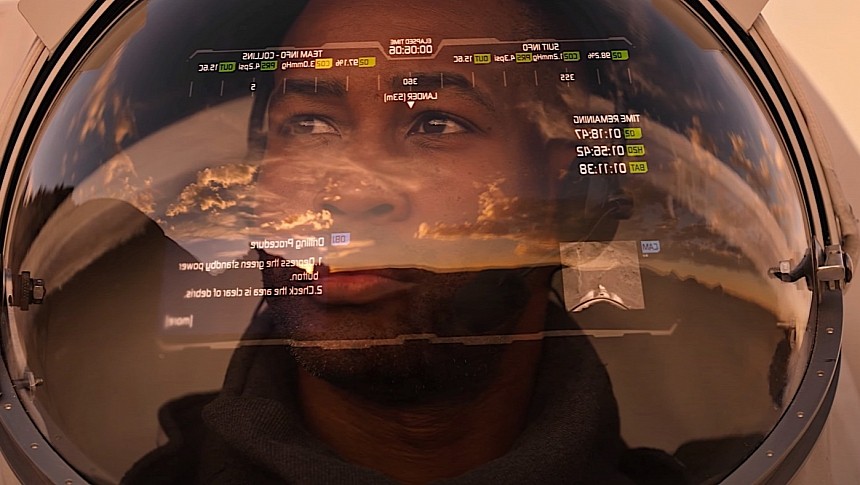The expansion in scope and reach of the American space exploration efforts does not solely cover spaceships and rockets. NASA is presently engaged in an all-out effort to modernize everything it does and uses, including the spacesuits its astronauts use for their daily work.
Spacesuits are an important tool for the people who work hundreds of miles above the surface of our planet. They allow them to boldly step into the vacuum of space and live to tell the tale. But the current design is so old it will probably soon become unusable.
The current suits are called Extravehicular Mobility Unit (EMU), and have been in use since the 1980s. They are used for spacewalks because that's pretty much all human astronauts currently do.
At about the same time it announced it was looking for a suit designed for the moonwalks of the Artemis missions, NASA announced it was also in need of a replacement for the EMU. We learned a couple of years ago that the company that will be making this replacement suit is Collins Aerospace.
Because of its nature, the moonwalk suit, developed by Axiom Space and called AxEMU, captured all of our attention, and that meant we kind of all forgot about the one meant for spacewalks. Until this week, that is, when Collins decided to give us an update on how work is progressing.
We learned that the suit just completed its Crew Capability Assessment test. What that means is that "experienced former NASA astronauts" put on the garments and proceeded to test the design in a zero-gravity environment. No, not in space, but inside an aircraft dropping to the ground in a bid to simulate the conditions in space.
The tests targeted several of the suit's aspects, including the pressure garment, the use of tools like the ones available on the International Space Station (ISS), and how it stacks up against the current design.
Now that this stage is out of the way, Collins will move to perform thermal vacuum tests and an underwater trial at the NASA Neutral Buoyancy Lab in Texas. It's unclear when the suit will be ready for use, but we expect that to happen before 2026, the deadline for Axiom's design.
The spacewalk is so advanced that it is described by Collins as the world's smallest spacecraft. It carries everything a human would need to survive in space, just like a spaceship: oxygen supply, electrical power, ventilation, hydration, liquid cooling, and a puncture-resistant outer layer.
The suit is lighter and has a lower volume than the existing one and it was built in such a way as to fit 99 percent of body types. And on top of that it's of the open architecture variety, meaning it can be upgraded as new technologies are adopted by astronauts.
Although it initially planned for Axiom to make the moonwalk suit and Collins the spacewalk one, NASA had a change of heart and instructed each of the two companies to adapt their designs for use in both scenarios. So don't be surprised if we get to see the world's smallest spacecraft out for a walk on the surface of the Moon as well.
The current suits are called Extravehicular Mobility Unit (EMU), and have been in use since the 1980s. They are used for spacewalks because that's pretty much all human astronauts currently do.
At about the same time it announced it was looking for a suit designed for the moonwalks of the Artemis missions, NASA announced it was also in need of a replacement for the EMU. We learned a couple of years ago that the company that will be making this replacement suit is Collins Aerospace.
Because of its nature, the moonwalk suit, developed by Axiom Space and called AxEMU, captured all of our attention, and that meant we kind of all forgot about the one meant for spacewalks. Until this week, that is, when Collins decided to give us an update on how work is progressing.
We learned that the suit just completed its Crew Capability Assessment test. What that means is that "experienced former NASA astronauts" put on the garments and proceeded to test the design in a zero-gravity environment. No, not in space, but inside an aircraft dropping to the ground in a bid to simulate the conditions in space.
The tests targeted several of the suit's aspects, including the pressure garment, the use of tools like the ones available on the International Space Station (ISS), and how it stacks up against the current design.
Now that this stage is out of the way, Collins will move to perform thermal vacuum tests and an underwater trial at the NASA Neutral Buoyancy Lab in Texas. It's unclear when the suit will be ready for use, but we expect that to happen before 2026, the deadline for Axiom's design.
The spacewalk is so advanced that it is described by Collins as the world's smallest spacecraft. It carries everything a human would need to survive in space, just like a spaceship: oxygen supply, electrical power, ventilation, hydration, liquid cooling, and a puncture-resistant outer layer.
The suit is lighter and has a lower volume than the existing one and it was built in such a way as to fit 99 percent of body types. And on top of that it's of the open architecture variety, meaning it can be upgraded as new technologies are adopted by astronauts.
Although it initially planned for Axiom to make the moonwalk suit and Collins the spacewalk one, NASA had a change of heart and instructed each of the two companies to adapt their designs for use in both scenarios. So don't be surprised if we get to see the world's smallest spacecraft out for a walk on the surface of the Moon as well.








